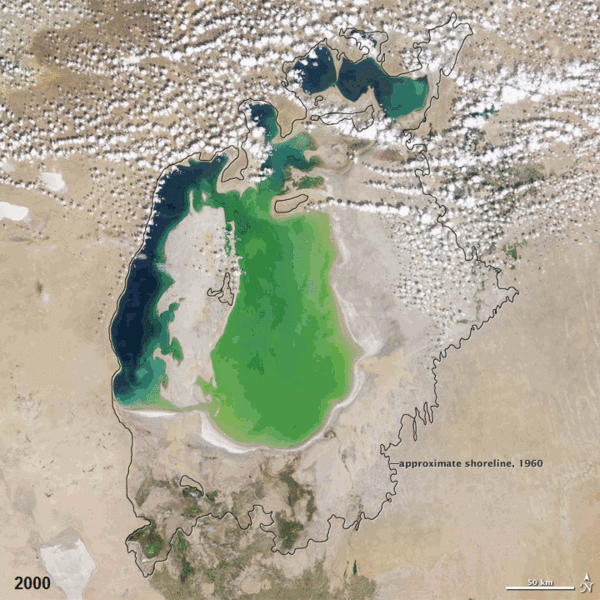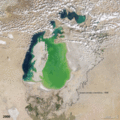Fișier:Aral sea.gif

Mărimea acestei previzualizări: 600 × 600 pixeli. Alte rezoluții: 240 × 240 pixeli | 480 × 480 pixeli | 720 × 720 pixeli.
Mărește rezoluția imaginii (720 × 720 pixeli, mărime fișier: 3,16 MB, tip MIME: image/gif, în buclă, 12 imagini, 12 s)
Istoricul fișierului
Apăsați pe Data și ora pentru a vedea versiunea trimisă atunci.
| Data și ora | Miniatură | Dimensiuni | Utilizator | Comentariu | |
|---|---|---|---|---|---|
| actuală | 19 decembrie 2011 10:38 |  | 720x720 (3,16 MB) | ComputerHotline | == Summary == {{Information |Description={{en|In the 1960s, the Soviet Union undertook a major water diversion project on the arid plains of Kazakhstan, Uzbekistan, and Turkmenistan. The region’s two major rivers, fed from snowmelt and precipitation in |
| 25 decembrie 2010 15:19 |  | 720x720 (2,92 MB) | ComputerHotline | == Summary == {{Information |Description={{en|In the 1960s, the Soviet Union undertook a major water diversion project on the arid plains of Kazakhstan, Uzbekistan, and Turkmenistan. The region’s two major rivers, fed from snowmelt and precipitation in |
Utilizarea fișierului
Următoarele pagini conțin această imagine:
Utilizarea globală a fișierului
Următoarele alte proiecte wiki folosesc acest fișier:
- Utilizare la ba.wikipedia.org
- Utilizare la ca.wikipedia.org
- Utilizare la en.wikibooks.org
- Utilizare la es.wikipedia.org
- Utilizare la et.wikipedia.org
- Utilizare la eu.wikipedia.org
- Utilizare la fr.wikipedia.org
- Utilizare la hsb.wikipedia.org
- Utilizare la kk.wikipedia.org
- Utilizare la pl.wikipedia.org
- Utilizare la ru.wikipedia.org
- Utilizare la ru.wikibooks.org
- Utilizare la ru.wikinews.org
- Utilizare la simple.wikipedia.org
- Utilizare la sk.wikipedia.org
- Utilizare la uz.wikipedia.org



